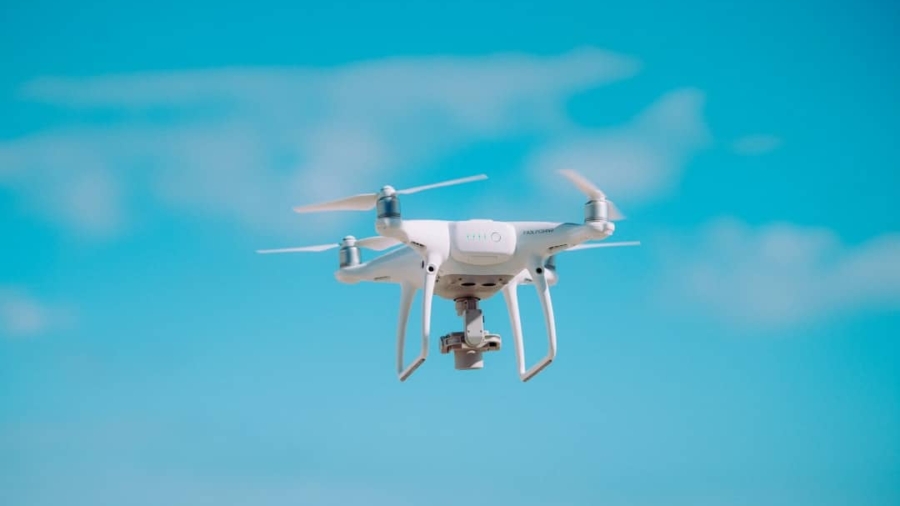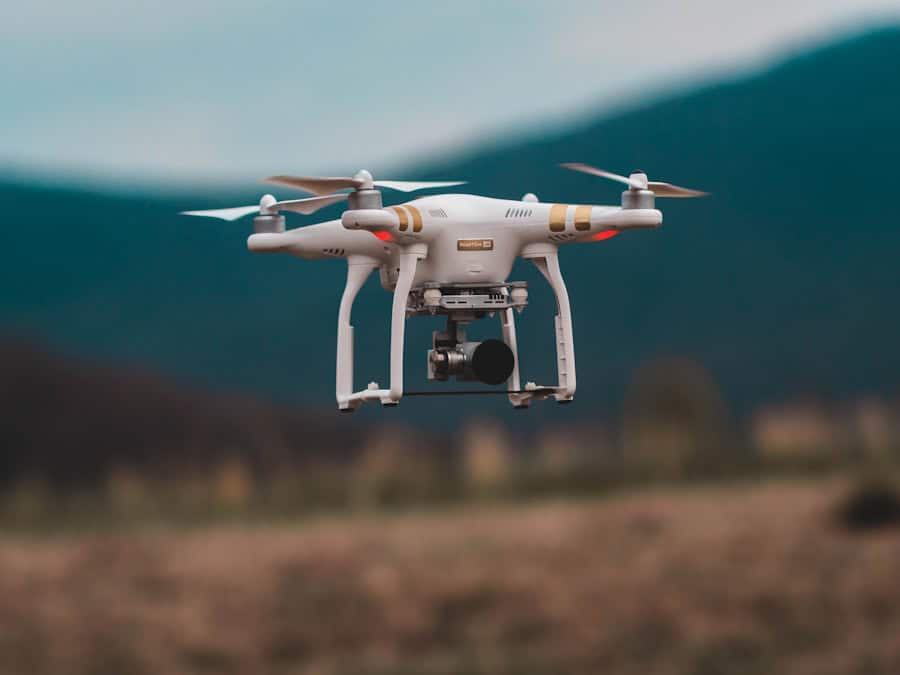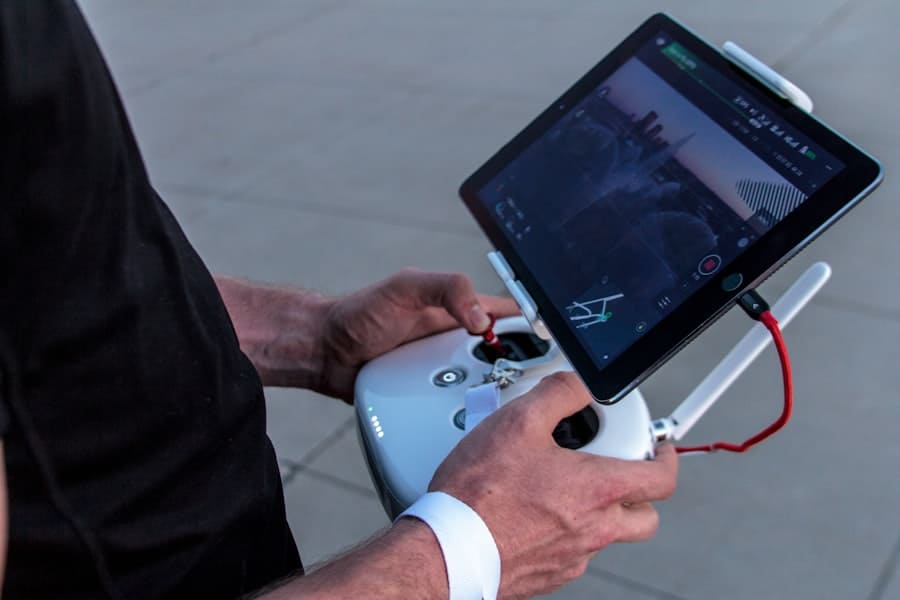The evolution of consumer drones has been marked by rapid technological advancements, leading to an increasing demand for customization and versatility. Modular components have emerged as a pivotal innovation in this domain, allowing users to tailor their drones to specific needs and preferences. This modularity not only enhances the user experience but also extends the lifespan of the drones by enabling easy upgrades and repairs.
As the drone market continues to expand, understanding the role of modular components becomes essential for both enthusiasts and professionals alike. Modular components refer to interchangeable parts that can be easily added, removed, or replaced without requiring extensive technical knowledge or tools. This design philosophy promotes flexibility, enabling users to adapt their drones for various applications, from aerial photography to racing.
The ability to customize drones with modular components has transformed the landscape of consumer drones, making them more accessible and appealing to a broader audience. As we delve deeper into the advantages and implications of modular components, it becomes clear that they are not merely a trend but a fundamental shift in how drones are designed and utilized.
Key Takeaways
- Modular components in consumer drones allow for easy customization and upgrades, making it easier for users to tailor their drones to their specific needs and preferences.
- Using modular components in customizing drones offers advantages such as flexibility, cost-effectiveness, and the ability to easily replace or upgrade individual parts.
- Popular modular components for customizing drones include interchangeable cameras, propellers, batteries, and flight controllers, among others.
- Modular components enhance drone performance and functionality by allowing users to optimize their drones for specific tasks, such as aerial photography, racing, or agricultural applications.
- The impact of modular components on drone customization is significant, as it empowers users to create drones that are tailored to their exact requirements and preferences, leading to a more diverse and innovative drone market.
The Advantages of Using Modular Components in Customizing Drones
One of the most significant advantages of modular components is the ability to personalize drones according to individual preferences and requirements. This customization can range from altering the drone’s payload capacity to enhancing its flight capabilities. For instance, a photographer may choose to equip their drone with a high-resolution camera module, while a racing enthusiast might prioritize speed and agility by selecting lightweight frames and powerful motors.
This level of personalization ensures that users can optimize their drones for specific tasks, ultimately improving performance and satisfaction. Moreover, modular components contribute to cost-effectiveness in drone ownership. Instead of purchasing an entirely new drone when a specific feature becomes outdated or when a user’s needs change, individuals can simply upgrade or replace the relevant modules.
This not only saves money but also reduces electronic waste, aligning with growing environmental concerns. The ability to swap out components means that users can keep their drones up-to-date with the latest technology without the need for a complete overhaul, making modularity an economically sound choice.
Popular Modular Components for Customizing Drones
The market for modular drone components is diverse, offering a wide array of options that cater to various applications and user preferences. One of the most sought-after components is the camera module. High-quality cameras with advanced features such as 4K video recording, gimbal stabilization, and thermal imaging are available for integration into consumer drones.
These camera modules allow users to capture stunning aerial footage or conduct inspections with precision, making them invaluable for photographers and professionals in fields like agriculture and construction. Another popular category of modular components includes battery packs. The flight time of a drone is often limited by its battery capacity, so having interchangeable battery modules can significantly enhance operational efficiency.
Users can select batteries with varying capacities depending on their flight requirements, ensuring that they have enough power for longer missions or more demanding tasks. Additionally, advancements in battery technology, such as lithium-polymer (LiPo) batteries, have led to lighter and more efficient options that further improve drone performance.
How Modular Components Enhance Performance and Functionality
The integration of modular components into consumer drones not only allows for customization but also enhances overall performance and functionality. For example, users can upgrade their drone’s propulsion system by swapping out motors or propellers to achieve better thrust and maneuverability. This is particularly beneficial for racing drones, where speed and agility are paramount.
By selecting high-performance motors and lightweight propellers, users can significantly improve their drone’s responsiveness and flight characteristics. Furthermore, modular components can enhance a drone’s navigational capabilities. Advanced GPS modules can be added to improve positioning accuracy, while additional sensors such as LiDAR or ultrasonic sensors can facilitate obstacle detection and avoidance.
These enhancements are crucial for applications like surveying or search-and-rescue missions, where precision and safety are critical. The ability to integrate such technologies into a single platform allows users to create highly specialized drones tailored to their specific operational needs.
The Impact of Modular Components on Drone Customization
The impact of modular components on drone customization extends beyond individual preferences; it fosters a culture of innovation within the drone community. As manufacturers continue to develop new modules, users are encouraged to experiment with different configurations and setups. This experimentation leads to a wealth of knowledge sharing among enthusiasts, resulting in forums and online communities where users exchange tips, tricks, and best practices for building and customizing their drones.
Moreover, the rise of modular components has spurred competition among manufacturers, driving innovation in design and functionality. Companies are increasingly focused on creating versatile components that can be easily integrated into various drone models. This competitive landscape not only benefits consumers through improved product offerings but also accelerates technological advancements in the industry.
As more users engage in customization, manufacturers are motivated to push the boundaries of what is possible with drone technology.
Tips for Choosing and Using Modular Components for Drones
Verify Compatibility
The first step is to verify that the components are compatible with the specific drone model. Many manufacturers provide compatibility lists or guidelines to help users make informed purchasing decisions.
Understand Component Specifications
Understanding the specifications of each component, such as weight, power requirements, and performance ratings, is crucial in selecting parts that will work together seamlessly.
Choose Components Based on Intended Use
The intended use of the drone is another critical consideration. Users should assess their primary objectives, whether it’s aerial photography, racing, or surveying, and choose components that align with those goals. For example, if high-quality images are the priority, investing in a superior camera module is essential. On the other hand, if speed is the priority, lightweight frames and powerful motors should be prioritized. By aligning component choices with specific use cases, users can maximize their drone’s potential.
The Future of Modular Components in Drone Technology
Looking ahead, the future of modular components in drone technology appears promising as advancements continue to reshape the industry landscape. One potential development is the integration of artificial intelligence (AI) into modular systems. AI-driven modules could enhance autonomous flight capabilities, enabling drones to make real-time decisions based on environmental data.
Additionally, as 5G technology becomes more widespread, it may facilitate enhanced communication between modular components and ground control systems. This could lead to improved data transfer rates and real-time monitoring capabilities, further enhancing the functionality of customizable drones.
The potential for remote updates and upgrades through cloud-based systems could also streamline the process of maintaining and enhancing drone performance over time.
The Importance of Modular Components in Customizing Consumer Drones
In summary, modular components play a crucial role in the customization of consumer drones by providing flexibility, enhancing performance, and fostering innovation within the community. As users increasingly seek personalized solutions tailored to their specific needs, the demand for modularity will likely continue to grow. The ability to interchange parts not only empowers users but also contributes to a more sustainable approach to drone ownership by reducing waste and promoting longevity.
As technology continues to advance, the future of modular components in drone technology holds exciting possibilities that could redefine how we interact with these devices. From improved performance metrics to enhanced autonomous capabilities driven by AI and 5G connectivity, the landscape of consumer drones is poised for transformation. Embracing modularity will undoubtedly remain at the forefront of this evolution, ensuring that consumers have access to versatile tools that meet their ever-changing demands in an increasingly dynamic world.
In a recent article on the best music production software, the importance of customizable tools for creating unique sounds and compositions is highlighted. Just like how modular components allow for customization in consumer drones, music production software offers a wide range of features and options for musicians to tailor their sound to their liking. Both industries emphasize the value of flexibility and personalization in their products, catering to the individual needs and preferences of their users.
FAQs
What are modular components in consumer drones?
Modular components in consumer drones are interchangeable parts that can be easily added or removed to customize the functionality and features of the drone. These components can include cameras, propellers, batteries, and other accessories.
How do modular components benefit consumer drones?
Modular components allow consumers to customize their drones to fit their specific needs and preferences. They also make it easier to upgrade or repair individual parts without having to replace the entire drone.
What are some examples of modular components in consumer drones?
Examples of modular components in consumer drones include interchangeable cameras for different types of photography or videography, modular propellers for varying flight conditions, and swappable batteries for extended flight time.
Can consumers easily install and remove modular components in drones?
Yes, modular components are designed to be easily installed and removed by consumers without the need for specialized tools or technical expertise. This allows for quick and convenient customization of the drone.
Are there any limitations to using modular components in consumer drones?
While modular components offer a high degree of customization, consumers should ensure that the components they choose are compatible with their specific drone model. Additionally, frequent swapping of components may lead to wear and tear on the drone’s connectors and mounting points.



